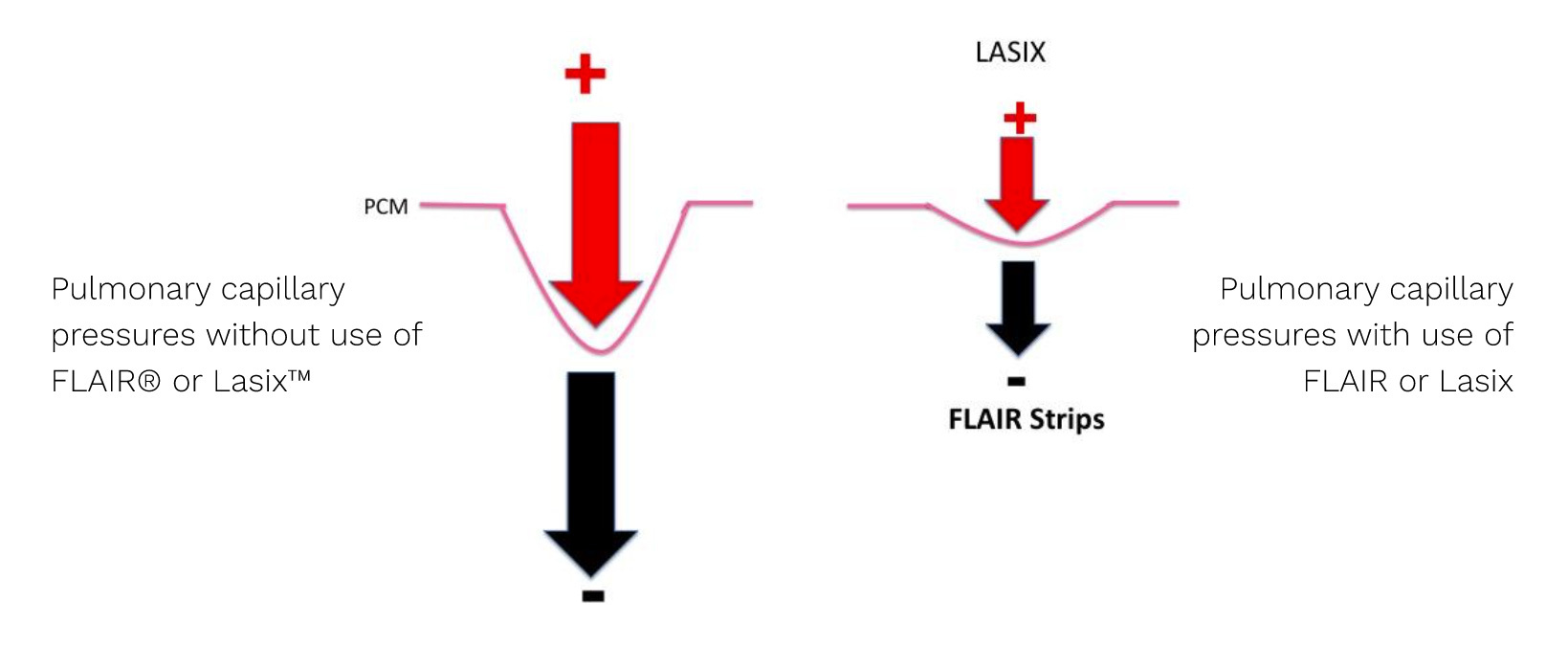Reduce Exercise Induced Pulmonary Hemorrhage
The immense forces horses generate during high-speed exertion places extraordinary stress on the blood vessels deep within horses’ lungs that can result in an exercise induced pulmonary hemorrhage (EIPH). EIPH, also referred to as “lung bleeding” is defined as the presence of blood in the airways during or following exercise.
Several studies performed in the lab and on the track establish that FLAIR® Equine Nasal Strips reduce EIPH. Nothing stops EIPH. In fact, only two means have been proven to effectively reduce EIPH, FLAIR Strips and the drug furosemide (Salix formerly “Lasix” )1.
How do FLAIR Strips Reduce EIPH?
In a nutshell, during exercise, increased blood pressure in the lungs pushes on the pulmonary capillary membrane (PCM) from the inside out. High vacuum pressure resulting from inhaling large amounts of air pulls on the PCM from the outside. The combination of high blood pressure pulling and high vacuum pressure pulling on the walls of the PCM causes the blood vessels to rupture releasing blood into the airways. By reducing airway resistance in the nasal passages, FLAIR Strips lower the vacuum pressure needed to bring in air resulting in lower vacuum pressure pulling on the outside of the pulmonary capillaries, so fewer blood vessels are ruptured.
A more detailed discussion is below.
Why Does EIPH Occur?
EIPH occurs when pulmonary capillary membranes (PCM) deep within the lungs rupture allowing blood from the pulmonary capillaries to leak into the airways.
What is the PCM?
The PCM is a membrane that separates the pulmonary capillaries from the alveoli (air sacs) deep within the lungs. The PCM is extremely efficient at allowing transfer of oxygen and carbon dioxide into and out of the bloodstream during breathing and is one of the reasons why horses are super athletes. But, because it is only 1/100th the thickness of a human hair it is also very fragile.
1Exercise-Induced Pulmonary Hemorrhage (EIPH): Not Just a Racehorse Disorder, W. Bailey BVSC, MS, PhD, DACVIM and Emmanuelle Van Erck DVM, PhD, DECEIM, 27the Equine Health and Nutrition Conference, Feb 5-6, 2024 pp 43-49.
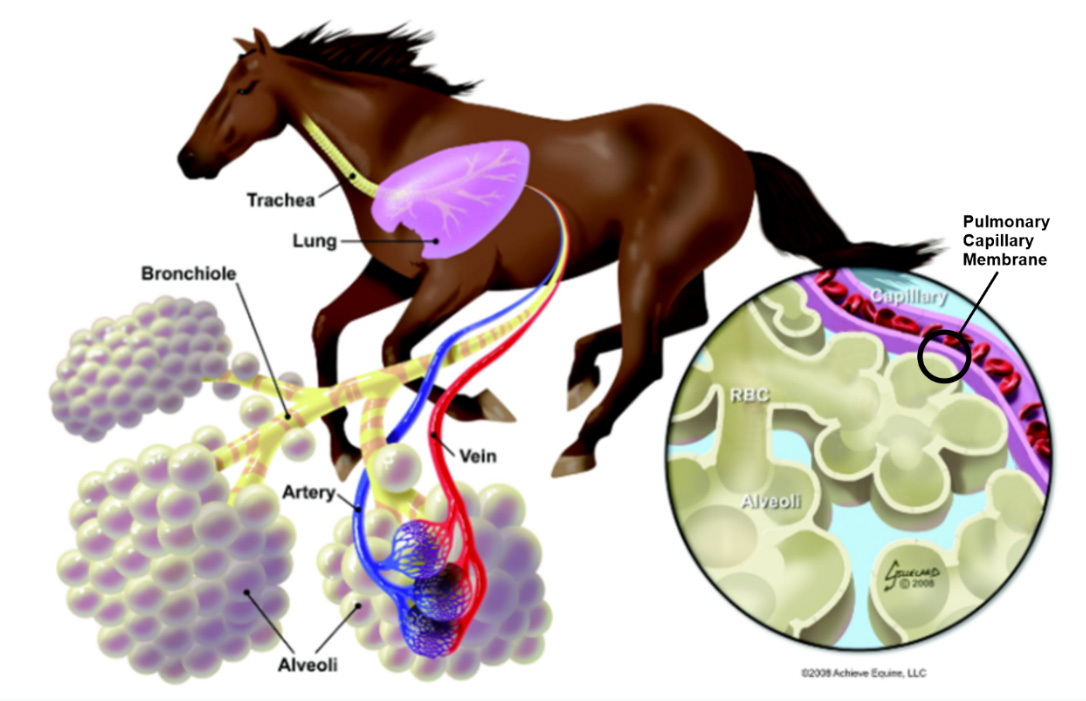
Air breathed in through the nose passes down the trachea into the lungs where airways branch into bronchioles that get smaller and smaller and terminate at the alveoli. The alveoli are surrounded by pulmonary arteries and veins carrying blood through the lungs to be oxygenated, The cross section blow up (above) shows the pulmonary capillary membrane between the alveoli and the capillaries.
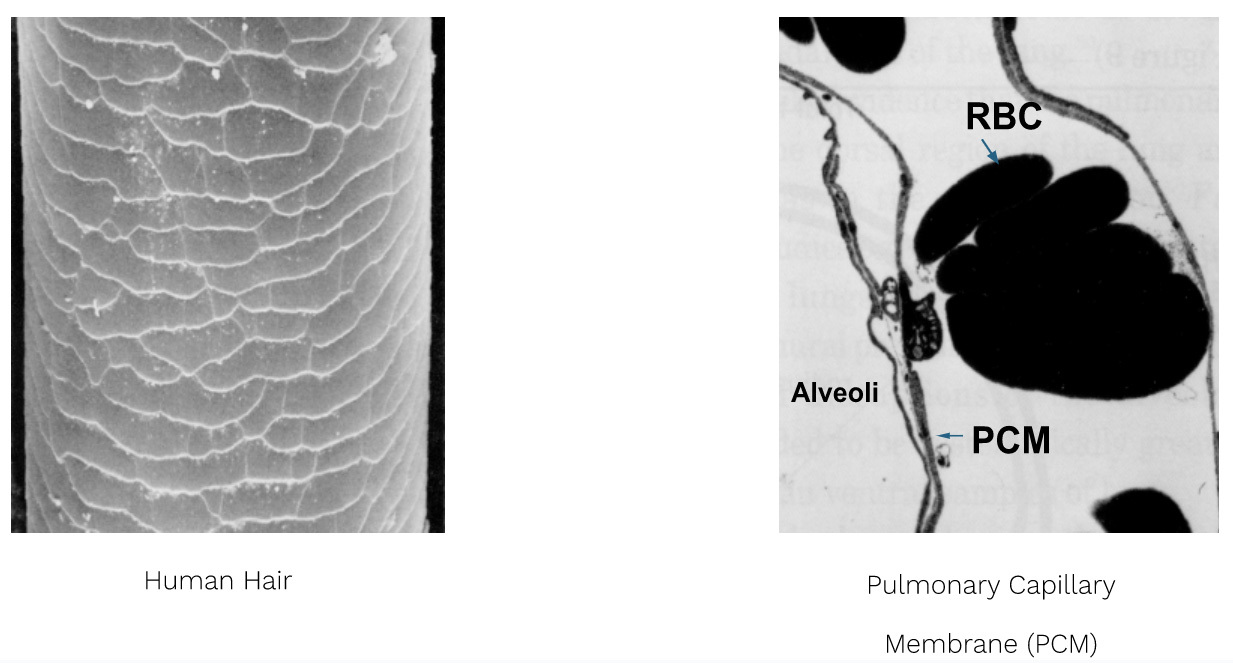
The PCM is very efficient at permitting diffusion of oxygen from the alveoli to the blood, but it’s also very fragile. The photo on the left is a magnified human hair. The PCM, shown on the right, is the thin wall between the alveolus and the RBCs and is only 1/100th the thickness of a human hair.
During exercise two forces cause the PCM to rupture
When exercise intensity increases, horses increase oxygen intake and pump more blood to deliver the oxygen to the heart, diaphragm and muscles to provide energy for the work.
1. Strong suction pressure outside the pulmonary capillaries
As horses start to breathe deeper and faster to bring in more air strong suction forces are created in the airways. This suction allows horses to draw in about nine 55-gallon barrels of air every minute. While drawing in air, this strong suction force also pulls on the outside of the PCM which surrounds the pulmonary capillaries.
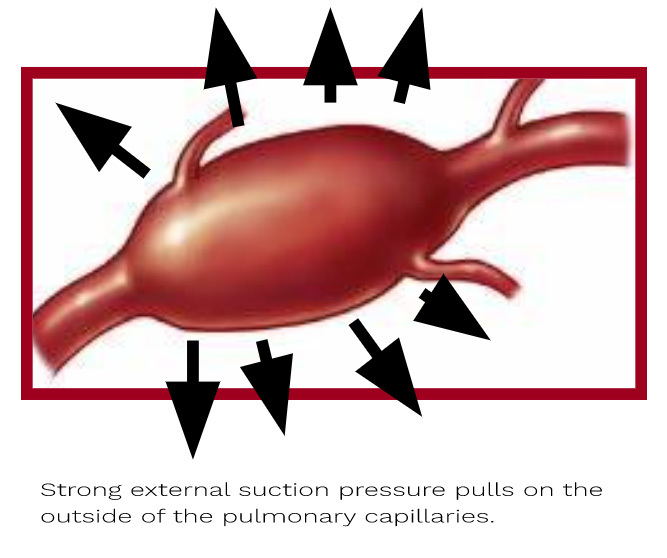
2. High blood pressure inside the pulmonary capillaries
As horses breath in more oxygen the amount of circulating red blood cells (RBC) increases so more RBCs are available to carry oxygen. These extra RBCs are stored in the spleen. When you warm your horse up, the spleen contracts, pushing the RBCs into circulation for use during exercise. (That’s why warming your horse up before exercise is so important – to make sure they have sufficient RBCs to provide for the increased oxygen demand). In addition, the heart starts beating faster and with more force.
The increased circulating RBCs combined with increased heart rate and force increases blood pressure throughout the body, including in the lungs. In fact, during intensive exercise the blood pressure in the pulmonary capillaries increases 4-fold. This means that blood pressure in the pulmonary capillaries is pushing outward against the PCM.
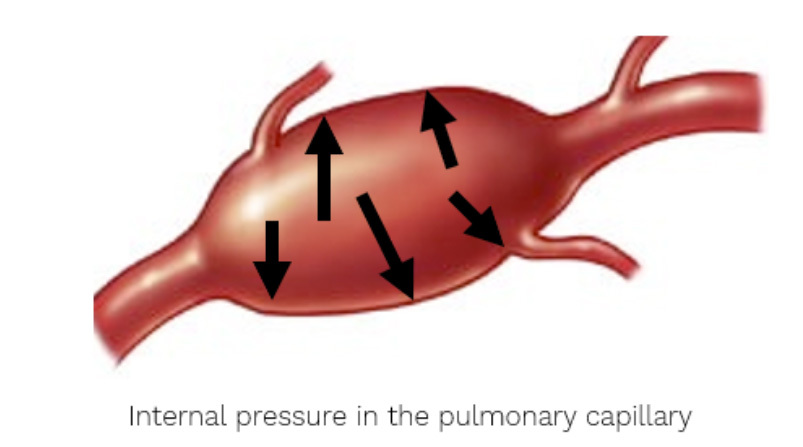
3. The pulmonary capillaries and PCM can only take so much.
Referring to the diagrams below, the combined pushing force (red arrow) and suction force (black arrow) being exerted on the pulmonary capillaries and the PCM causes the PCM to rupture resulting in EIPH or bleeding.
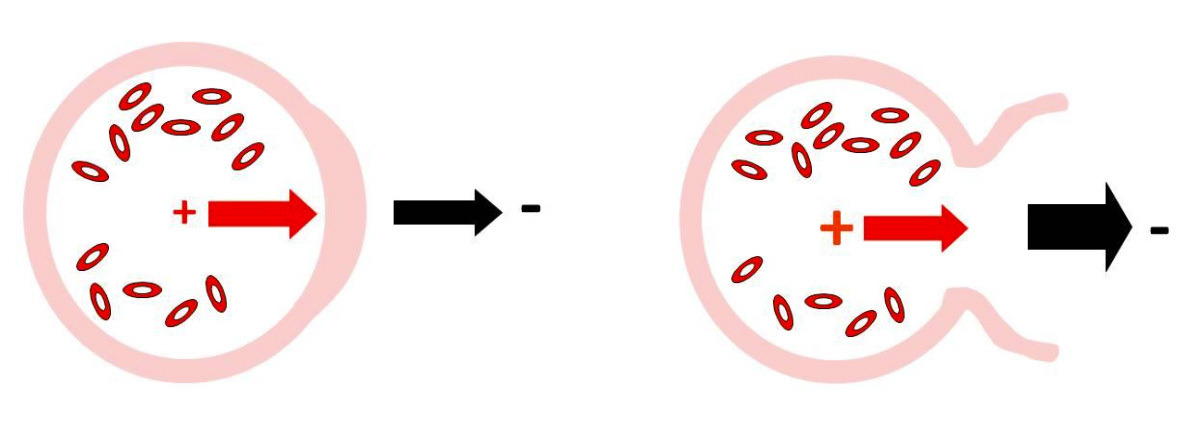
The image below on the left is an artist’s drawing of RBCs released from the pulmonary capillaries into the alveoli. The photo on the right is an electron micrograph showing an actual RBC coming out of the pulmonary capillary where the membrane has ruptured.
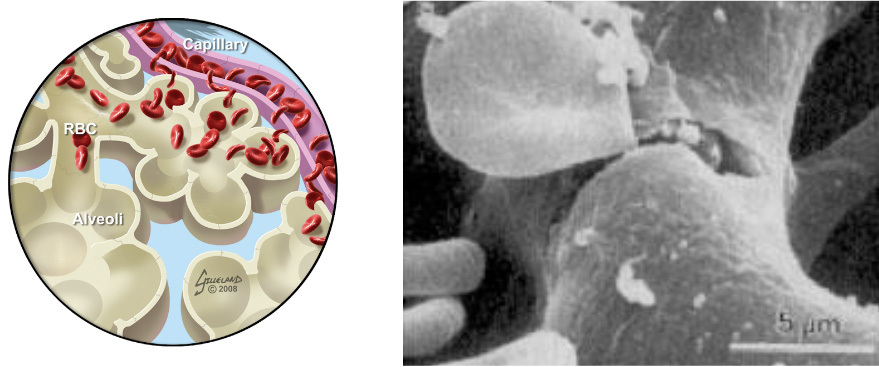
4. Other Factors Impacting EIPH
Other factors can contribute to increase the severity of EIPH. These include inflammation, infection, allergies, age of horse, speed, as well as ground surface, altitude and environmental conditions. EIPH has never been shown to be caused by clotting abnormalities.
How FLAIR Strips reduce EIPH
The way FLAIR Strips and the drug furosemide work to reduce EIPH is shown in the diagram below. As discussed above, on the left, the increased blood pressure (red arrow) pushes on the PCM. The negative pressure or suction (back arrow) pulls on the PCM resulting in rupture. However, on the right, with FLAIR and the push and pull pressures are reduced thus reducing the stress that causes the PCM to rupture. Lasix is a diuretic that reduces the internal pressure pushing on the PCM by causing the horse to urinate high volumes of fluids. FLAIR Strips work by reducing the negative pressure pulling on the PCM by reducing the resistance to breathing air in. Both work to reduce the pressure being exerted on the PCM so the membrane is less likely to rupture. FLAIR Strips and Lasix can be used together.
